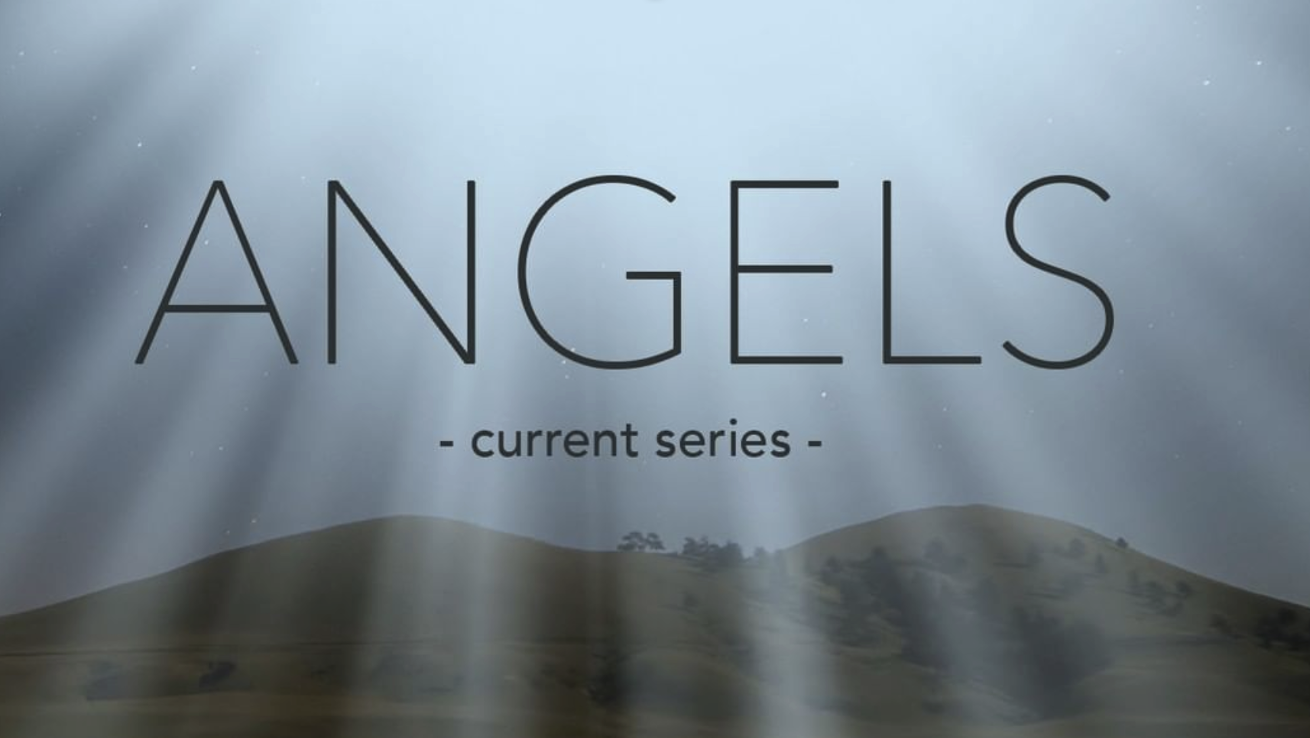Closing Thoughts on Racism
This is Part 4 of a series. The first part covers a time of prayer that was supposed to be for Black people, at the Summer Leadership Conference in 2019. As discussed there, it was manipulative and problematic for a number of reasons. At times, it rises to a level I would describe as racist, and I don’t use that word lightly. Please read that first.
Part 2 covered the The Network’s response to Racial Injustice in the Spring of 2020. It shows how the 2019 teaching and prayer echoed into Luke Williams messaging in 2020 at Vista Church in San Luis Obispo, CA. It also showed how Williams seemingly leveraged that prayer as evidence that The Network cared about Black people. However, Williams talked about the prayer inaccurately, overstating its length and stating it was unplanned, which goes against available evidence.
In Part 3, I shared audio from Blue Sky Church in Bellevue, WA, taught by Lead Pastor Krsh Penzar on June 7th, 2020. Comparing with Williams’ sermon on the same day reveals sharing that meets common definitions of plagiarism.
In this final “Part 4”, I share remaining observations about The Network’s failures when dealing with racism, and some parting thoughts.
Teaching Series graphic from Brookfield Church in October, 2019.
Beyond those I’ve shared already, there are very few other records of the church dealing with diversity, inclusion, or racism. I have (with help) reviewed the Network’s posts on Instagram, and found only the following:
Some churches regularly post something for Martin Luther King Jr. Day
Some churches have posted something for Juneteenth, but only since 2020
Many churches have a “Lunar New Year” party, but some have a broader multi-cultural event in which people bring something to represent their culture of origin.
And of course, the statement that most of the churches posted after George Floyd’s murder and subsequent protests.
I see no problem with any of those actions! Those seem good, and you have to start somewhere.
Sermon Series on Race
There are exactly two teaching series that I found that are clearly related to the topic of race. I don’t know anything about them beyond what’s on Instagram, but I wanted to share the graphics, context, and a few observations.
EMBRACE: South Grove Church
South Grove Church (Athens, GA), where Bobby Malicoat is the lead pastor, posted the following graphic for the “EMBRACE” sermon series on Instagram on June 27th, 2020. I’ve heard that at least one other church taught something similar, but I can’t independently verify that. The description (in the caption for the image) doesn’t really say much, nor are we able to determine what passages might be used. The series ran 3 weeks (June 28, July 5th, and July 12th) before they started their next series on July 19th (“Believing the Bible”).
“Join us tomorrow in person at the Classic Center or on our website at 10am as we begin a new sermon series. We will spend a few weeks looking at how the Bible addresses race and how that should affect the life of a Christian. Don't forget to wear your face covering and practice social distancing!”
The post was “liked” by Rock River Church, Brookfield Church, and South Grove Church itself (not the only example I found of a church liking its own posts). A series on race seems like a good idea for churches in the summer of 2020, but it’s impossible to evaluate the quality without the content.
Unfortunately, not much more can be said about this, unless anyone else knows more context about this series or others like it across the Network.
From Every Tribe, Language, People & Nation: Rock River Church
On Sunday, May 15th, I published a post titled “Demographics of Network Leadership”, in which I attempted to use data to evaluate if the church had been successful in being “Multi-Ethnic” as their values state they want to be. On Friday, May 27th, Rock River Church (San Marcos, TX; Alex Dieckmann is the Lead Pastor) announced a new teaching series on Instagram called “From Every Tribe, Language, People & Nation.” The graphic and description:
Join us this Sunday as we begin a new teaching series: “From Every Tribe, Language, People and Nation.”
Services at 9am and 11am!
The post is liked by Roots Church and Mountain Heights Church.
Here’s Rock River’s history of posting Teaching Series:
August 2021 and earlier - posting every new series.
December 2021: “Why Did Jesus Come?” (A Christmas series)
May 27th, 2022: “From Every Tribe, Language, People and Nation”
October 22nd, 2022: “The Greatness of God”
This one says “Join us for service tomorrow at 10am as we continue our current teaching series: The Greatness of God.”
Posting about the continuation (instead of the start) of a teaching series is not without precedent at Rock River, but had only been done for three of the previous 17 posted series, dating back to the start of the pandemic. Before the pandemic this had been done for 9 of the 10 series that are still posted on Instagram.
Is it possible that this series was in response to my post about the Demographics of Network Leadership (May 15th)? Is it further possible that, when I started writing about race again (October 6th and 17th) that they said, “oh no, they might notice what we did in May - post another teaching series!” I don’t know - it’s flimsy speculation at best, and easily denied (and makes me mockable as some conspiracy theorist). But the dates struck me as an odd coincidence.
One last note - my reporting on potential issues with the safety of children at Rock River Church didn’t begin until June 17th, though I did contact Texas DFPS on Friday, May 20th, so it’s possible that Texas DFPS had reached out to Rock River Church already regarding my report. Hard to say if that would have influenced anything.
Graphics of Biblical Figures
Part of Membership Bible Training is understanding that Angels do not look like the angels depicted in popular culture. Here’s Landon Nagata, Justin Major, and Tony Ranvestal all speaking about the appearance of angels in Session #2 of MBT.
-
All right, hopefully everyone's there. Daniel. Daniel chapter 10, verses two through 14. I’ll read it for us. "In those days. I Daniel was mourning for three weeks. I ate no delicacies, no meat or wine entered my mouth, nor did I anoint myself at all for the full three weeks. On the 24th day of the first month, I was standing on the bank of the great river that is the Tigris. I lifted my eyes and looked and behold a man enclosed in linen with a belt of fine gold from Uphaz around his waist. His body was like beryl. His face, like the appearance of lightning. His eyes like flaming torches. His arms and legs like the gleam of burnished bronze. And the sound of his words like the sound of excuse me a multitude."
Alright, I'm gonna stop there really quickly. So once again, Daniel's fasting here for three weeks straight. Didn't eat anything, right? He's standing on the bank of the Tigris, which is this long river and he looks and he sees an angel clothed in in linen. And he has this belt. I don't know why think of like WWF like this massive like golden belt right? Of finest gold from Uphaz which is just immensely wealthy region. And this body like beryl which is like crystal. His face was like the appearance of lightning. Like once again, you can piece together the imagery here. Words that the angel would speak sound like a massive crowd speaking all at one time. And let's be honest, like you, this is a picture and illustration we would get about an angel.
And you know, you've heard Luke joke about this from time to time like Hallmark's angel is like this cute little tooshy-butt angel with on a cloud. And that's not what an angel is looking to be like, if you look to the Bible, right? Look at Daniel here. Once again, his description is not this cute little childlike angel with like, kind of like cupid got the bow and arrow on. It's not like that. It's even hard to picture even when you read this account, right? Massive gold belt, body like crystal, face like lightning, and words when he's speaking like everyone's like all you guys chattering in a loud uproar at once. Still hard to piece together, right? We haven't seen anything like that in our culture. And we don't, we're not gonna see anything like that being sold on Amazon, right? If you try to buy an angel, it's not like that.
-
We're - if we ever if you ever see one, do not worship an angel, if you ever are to see one. And the reason that I would even say that is because they are so glorious, I think that we would be tempted to do so if we saw one because it's what happens to John in Revelation. When the angel shows up to him. It says that he falls down to worship and the angel says, "no, no, no, no, you should not - you can't do that. I'm a servant, just like you are. We're supposed to worship God." But they are so magnificent in their appearance that we would probably be tempted to do so. So they're, they're not you've heard me say before, probably like the chubby ceramic babies that people have sitting around on their shelves. That's not the depiction in the Bible of angels. They're incredible and powerful spiritual beings that I don't think are supposed to be messed with. I mean guards fall down like they're dead in their presence at Jesus's resurrection. We never worship them. We never pray to angels, we don't try to contact them. When one appears to help us, I think the appropriate thing to do is probably to just thank God for His protection and his provision if it appears that way.
-
Turn to the book of Daniel chapter 10. Daniel is after Psalms after Isaiah after Jeremiah. After Ezekiel. If you hit Hosea, you went too far. Daniel chapter 10. Here we see a lot of detail as an angel is described, that Daniel gets to see. Daniel chapter 10, starting in verse two. "In those days I Daniel was mourning for three weeks I know delicacies, no meat or wine entered my mouth, nor did I anoint myself at all for the full three weeks." By the way, some people take that and turn it into a fast and they call it the Daniel fast. That's where that comes from. "On the 24th day, the first month as I was standing on the bank of the great river, that is the Tigris I lifted up my eyes and looked and behold, a man clothed in linen," So firsthand, he looks like a man. "With a belt of fine gold from Uphaz around his waist. His body was like beryl," that's this like cool crystal colorful things mineral. "His face like the appearance of lightning, his eyes like flaming torches, his arms and legs like the gleam of burnished bronze, and the sound of his words, like the sound of a multitude. And I Daniel alone saw the vision for the men who were with me did not see the vision but a great trembling fell upon them, and they fled to hide themselves. So I was left alone and saw this great vision and no strength was left in me. My radiant appearance was fearfully changed, and I retained no strength. Then I heard the sound of his words. And as I heard the sound of His word, I fell on my face in a deep sleep with my face to the ground." So you get the intensity of this angelic visitation. It is overwhelming and powerful and brilliant. I mean, just more than we can even imagine this - what this creature looks like.
So that’s the degree of importance that they place on understanding that angels do not look like the broader culture says they do. Keep that in mind as we continue. The image given in the book of Daniel is, as Tony Ranvestal says, hard to imagine. How does the Network deal with that ambiguity? Brookfield Church (Athens, OH; Aaron Kuhnert is Lead Pastor) did a series on angels starting on December 1st, 2019, and this is the graphic they used. They solve it by simply not showing any depiction of an angel at all.
Brookfield Church - November 30, 2020 (Instagram)
However, Network churches occasionally include depictions of people from the Bible in their graphics. And those graphics, the vast majority of the time, depict those characters as white (see below), if an ethnicity can be inferred (sometimes they use silhouettes or other artistic renderings). While it’s difficult to determine the ethnicity of Biblical characters with precision in many cases, we can be sure that they did not look like modern white Europeans. This article from The Gospel Coalition is helpful and says: “While many of the characters in the Bible are Semitic (and thus looked like modern-day Israelis or Arabs), the story frequently includes individuals and groups from a wide spectrum of ethnicities.” Multiple obviously black individuals are in the Bible as well.
A church that is striving to be multi-ethnic should know this already. Steve Morgan claims that he heard from God that Vine was going to be part of “tearing down the walls” between Black and white in 1996, and the network claims to want to help achieve “unity” between all races.
Bottom line: Most if not all of the people in the Bible were people of color. They were middle-eastern, and would probably be referred to as “brown” by today’s standards. Jesus was not white, and did not have blue eyes or blond hair. (I got some help from twitter on this paragraph!)
Across all Network church Instagram pages, this is a collection of all of the teaching series graphics that contain representations of Biblical characters, at least as well as I was able to find (with a little help from my wife - thanks!). You can hover over any graphic to see which church it’s from. Note that many of the churches do not publish every teaching series to Instagram.


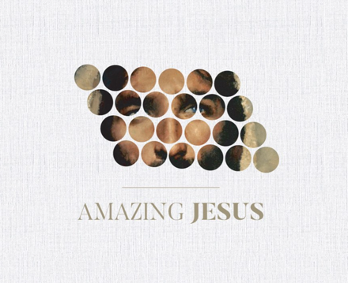

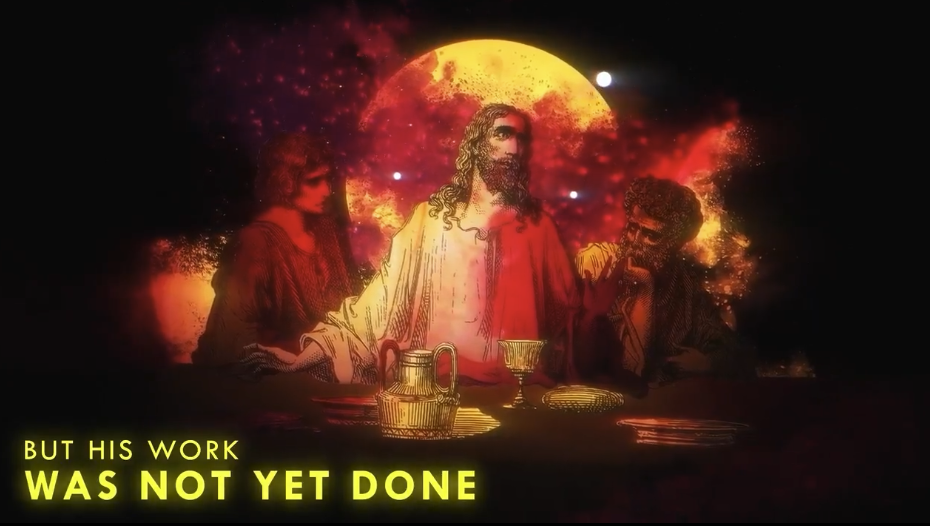

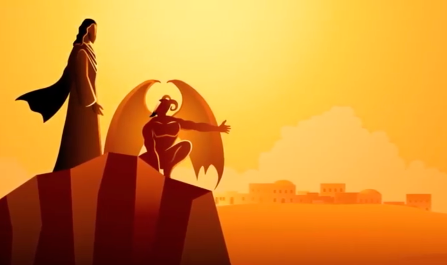



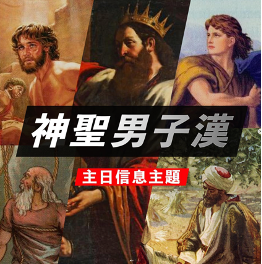
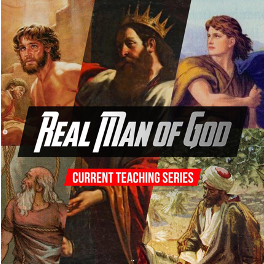
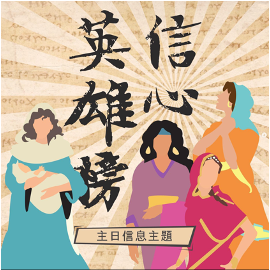
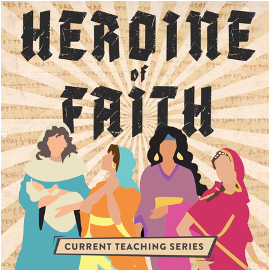
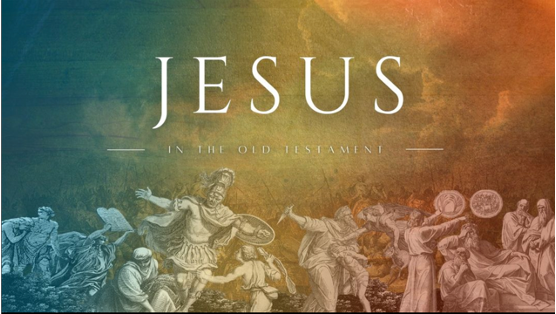

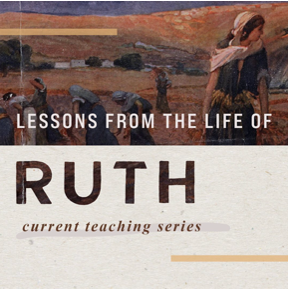
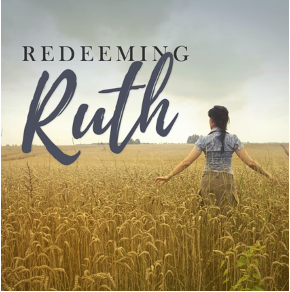
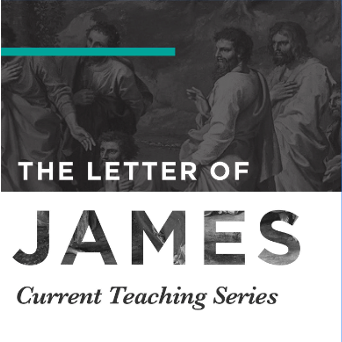
There’s a few that I want to talk about specifically
“The Real Jesus”
In this graphic we have six white depictions of Jesus. The one black Jesus is probably the closest to reality but still somewhat unlikely. I don’t have the audio from this series, which appears to have begun on September 29, 2019, so it’s hard to tell if the series would have addressed it. Maybe the point of the series was exactly this: that people draw Jesus a lot of different ways, but those aren’t real. But there’s not much in the graphic or description that would make me think that.
By the way, I can’t recommend enough reading the book “Jesus and John Wayne” by Kristin Kobes Du Mez, or at least listening to the series of interviews on The Holy Post with the author, starting with this episode (there are four, total). The Network is, to some degree, a product of modern white evangelicalism, and Du Mez has done phenomenal work tracing the origins and modern history of that movement.
“Amazing Jesus”
Joshua Church (Lead Pastor: Steve Morgan) was somewhere in the middle of this series on August 21, 2019. Rock River Church (Lead Pastor: Alex Dieckmann), was in this series by the same name and with same graphic on November 1st, 2019.
Summit Creek
Summit Creek uses very well-produced animations for those videos. I’ll follow-up on it, but these were not produced by the church. You can find the same animations available for purchase on various sites that sell sermon resources. I’ve captured a couple of stills. The one with Jesus and the Devil is debatable since it’s so heavily stylized. But “Jesus” in that image still has long flowing hair, reminiscent of all of the classic white depictions of Jesus. In fact, I’d argue that’s how you recognize that it’s Jesus at all.
Roots Church
Roots Church using white depictions is something I have no good explanation for, and it seems highly unwise to me. These series are all in 2021, more than two years after Roots was planted. The people in the Bible were likely not Taiwanese or any other form of Asian, but they also weren’t white Europeans. There’s simply no reason to use white depictions of Adam and Eve (I assume), “Real Man of God”, or “Heroine of the Faith” in a setting like Taipei. The two series on “Real Man of God” (on Heroes of the Faith) and “Heroine of the Faith” are jarring to me, since they both depict almost entirely a white group of exemplars.
The “Sex” series didn’t need people on it at all, and the other two could easily have been done with a list of names, or more accurate depictions, or even more silhouette styles with no obvious European features.
Others
Joshua Church uses a white depiction again with the series on Hannah from May 2020. Vista Church does it twice with Ruth (June 2021) and Love Like Jesus (July 2021). Stoneway’s “Jesus in the Old Testament” began in August of this year (2022).
What’s surprising to me is that many of these happened after broader evangelicalism has wrestled with much of this in the wake of George Floyd’s murder in May 2020. And once again, in June 2019, leaders in the Network said they valued breaking down walls, and said so again in June 2020. How does that begin if they continue, even just two months ago, almost exclusively using white depictions of people in the Bible? The vast majority of their graphics include no depictions of Biblical figures, but the ones that do are frequently problematic.
This is an easy thing to avoid getting wrong, and I’d encourage The Network to do better.
For example, three churches have taught on Esther, with none of them using any depiction of her at all. A number of churches appear to have taught on Jonah, using a whale as their image. And many of the churches are using stock photos for their images anyways, so all they need to do is just choose the stock images that avoid making this error.
Indigenous Peoples
I didn’t want to finish this series without a comment on Indigenous Peoples. The reason “BIPOC” has gained traction as an acronym for “Black, Indigenous, and People of Color” is that it’s highlighted the particular plight of Black and Indigenous peoples while recognizing that all people of color experience some marginalization.
In Krsh Penzar’s sermon on June 7th, 2020, he refers to the racism directed at Black people as “unique” in this country. It is undoubtedly beyond what most people of color experienced, but the reason BIPOC exists as an acronym is because Indigenous peoples also have experienced a horrific history. Says Wikipedia:
The population of African and European peoples in the Americas grew steadily, starting in 1492, and at the same time, the indigenous population began to plummet. Eurasian diseases such as influenza, pneumonic plagues, and smallpox, in combination with conflict, forced removal, enslavement, imprisonment, and outright warfare with European newcomers reduced populations and disrupted traditional societies.[3][4] The causes of the decline and the extent of it have been characterized as a genocide by some scholars.[5][6][7]
There is no need for me to get into “who had it worse.” I’m only stating that Indigenous peoples also have a history that’s been marked by all manner of horrors, and that some of those injustices continue today. I do not believe I ever heard reference to Indigenous peoples of any kind, except for when Sándor Paull (Network VP and Lead Pastor of Christland Church in College Station, TX) would talk about the “pagan” spiritual practices he was brought up in. I’m not sure on all of the specifics, but I understand that Paull is not a descendent of Native Americans.
The 12-foot tall “Oh Great Spirit” statue, in San Luis Obispo. Read More
In the following teaching audio from Luke Williams (Vista Church), teaching on Esther, he refers to Persia as being considered “the world.” In a joking tone, he says “Not too many people in San Luis Obispo at this point in history. Not too many people in LA.”
While certainly fewer people than today, Wikipedia estimates that the peak indigenous population of California was 340,000 people in 1769, which is when the Spanish Missions began to be established (in 1772, in San Luis Obispo). Luke Williams would have driven past this statue in San Luis Obispo (no more details shared to avoid any potential doxxing, which is always wrong).
Here’s the audio, followed by the transcript. The teaching was on October 24th, 2021.
-
I want to show you a map just to give you some context for just how powerful and far reaching his reign was. You can see in the left corner, you see the northern part of Africa, it stretches all the way over to India. And then if you go up north, we're up into Greece. It's hard to tell from this map because it's kind of so zoomed in. The reach of the empire that Xerxes inherits is staggering. Just what we see here in the orange. It's roughly 3 million square miles; the size of the US. At this point in history, this is considered the world. Period. The majority of the population in the world centered right in there, okay? Not too many people in San Luis Obispo, at this point in history. Not too many people in LA. The majority of the world is centered here. And here's this narcissistic, spoiled, rich young kid who's never worked a day in his life. And his father Darius hands him over the kingdom. To try and imagine this, it's imagine for our whole world, there's one ruler. And not only is he just governed politically, he governs politically, socially, economically, spiritually, every area of your life. I mean, this is the president of the US combined with the Queen of England combined with Elon Musk combined with Jeff Bezos all wrapped up into one. This is the extent of his power.
Source: Wikipedia
Is Luke technically wrong? He is definitely wrong when he says that this area “… was considered the world. Period.” Much of Asia, including China, most of Africa, northern and western Europe, all of the Americas. For context, at this point in history, the Great Wall of China was already under construction.
Williams does back off to “the majority of the world”. My guess is that the map Williams showed on screen was the one I’ve found on Wikipedia here (he refers to “the area in orange” and how zoomed in it is). It’s definitely a big empire! But if you click the link, you’ll see that they had rivals, including Greece. Williams puts the land area at about 3 million square miles. Wikipedia has it at 2.1 million, but let’s take Williams’ estimate. The land area of the earth, excluding Greenland and Antarctica would be about 50 million square miles. So at its peak, Persia covered 6% of that. But by population, they do in fact hold the record for the “Largest Empire by percentage of world population”, reaching a peak of almost 50 million people out of an estimated 112.4 million globally in roughly 480 BC, so 44%. It’s almost half, but not a majority, and certainly not enough to be considered “… the world. Period.”
Williams is overstating the power of Ahasuerus, and in the process, erasing much of the rest of the world, including the Chumash people on whose land Williams was delivering this teaching. By the way, you can check whose land you are on at this site, for anyone in the Americas or Canada: Native-Land.ca | Our home on native land.
Williams was teaching this on October 24th, 2021, less than two weeks after Indigenous Peoples day in California.
Closing Thoughts
The Network’s approach to issues of racism is defined almost as much by what they don’t do as what they do. When they do things in this area, they frequently make basic errors or broad sweeping platitudes with little practical application. But the demographics of the Network do not show that they have been successful. Their prayer for Black people shows an instinct to use Blacks more than serve them. And there’s no calls to repent of bias or racism throughout these resources I’ve shared. The two documented series that focus on race were in the immediate aftermath of George Floyd’s murder and following my article assessing the demographics of Network leadership.
Some of the sentiments shared are racist, particularly those shared by Steve Morgan in 2019. Others are just ignorant, like Williams and Penzar completely forgetting indigenous peoples. And still others are just downright bizarre, with the repeated prophecy for Vista Church that God would bring “first the Asians, then the Hispanics”. There is no evidence I’ve seen that this “prophecy” came before the church was heavily Asian.
And at the close of this series, I want to discuss, as LTN often asks, “Why does this matter?” First, because racism is bad. And it’s alive and well, just like any other form of sin. Christians who stand opposed to any other form of sin should care about this as well. Lives are at stake, and the failure of the broader white evangelical church to reckon with this has exacerbated and prolonged the injustices that racism has created.
It holds The Network back from its stated goals as well. How is it supposed to plant successful churches in Asia when it’s using depictions of Europeans as Biblical figures, even at its church in Taipei? How well will that go if The Network plants a church somewhere in Africa? Has it already resulted in some leaving or at least being more skeptical?
But looking at it more broadly, this is why the authority structures in The Network will either prevent it from growing, or will guarantee its fade into obscurity and irrelevance. They are resistant to feedback, even requiring that Small Group Leaders “refuse to engage in criticism” of their leaders (See Small Group Leader training materials, Week 1, Page 6; via LTN). But feedback is how we grow and how we learn. Anyone could have reached out to Williams with the facts above. In fact, I hope he reads this and learns. But there is no culture of inviting or accepting feedback. In fact Sándor Paull belittled the concept entirely in his 2018 sermon on unity (via LTN). So how will they learn? How will they gain other needed perspectives on the book of Esther like I’ve been privileged to read in:
Subversive Witness - Dominique Dubois Gilliard
Inspired - Rachel Held Evans
Trafficking Hadassah - Ericka Shawndricka Dunbar (I’ll have more comments from this angle in a future post when I’m done with the book)
Have any of them read Jemar Tisby’s outstanding Color of Compromise? To you, reading this, have you? These are all books I’ve learned from. I learn more every time I write one of these posts, and get feedback on it, and then get ready to do the next one. We learn by asking questions, doing research, and being exposed to opinions different than our own. I ask questions on Twitter, I do polls, I read books, listen to podcasts, and seek advice from people who know more than me about these topics.
If we cut ourselves off from outside sources, we guarantee a kind of intellectual atrophy, in which we will believe we are wise while actually being ignorant. After all, no one ever challenges us, so we must be right! Inviting diverse voices and challenging arguments is uncomfortable, as anyone who has done this will tell you. There are people I follow on Twitter who regularly make me upset, but usually because they show that I’ve been wrong about something. Articles I found while researching this post challenged my assumptions about the diversity present in Biblical times (there’s more than I thought!). And at least a couple sources (including Martin Luther) raised challenges regarding the historicity of Esther. And I learned uncomfortable truths about just how anti-semetic Martin Luther was (spoiler: very). But if we (Christians) are to be a people of truth, we cannot be a people of willful ignorance.
Jesus regularly made people uncomfortable by confronting them with the truth. And they had a choice each time: accept it and the changes it entailed; or reject it and him.
The Network Leadership Team has no persons of color. The Network’s common external resources include:
Wayne Grudem (and his son, Elliot Grudem)
Terry Virgo
John Lanferman
John Piper
Tim Keller
Mark Driscoll (not anymore)
John MacArthur
RT Kendall
Martin Lloyd-Jones
CS Lewis
Jonathan Edwards
Charles Spurgeon
Martin Luther
John Calvin
Randy Alcorn
Authors of commonly recommended books in The Network:
Dane Ortlund (Gentle and Lowly)
John and Stasi Eldredge (Wild at Heart, Captivating)
Merlin Carothers (From Fear to Faith)
David Seamands (Healing for Damaged Emotions)
Richard Sibbes (The Bruised Reed)
Leanne Payne (books recommended in the “Freedom” session of the Series)
Jerry Bridges (book recommended in the “Freedom” session of the Series)
Sally Lloyd Jones (Jesus Storybook Bible)
Hannah Hurnard (Hinds Feet on High Places)
Meg Meeker (Strong Fathers, Strong Daughters)
What do those have in common? They’re literally all white, and almost all are male. I do not recall a single book recommendation in the network by a person of color. Even in the summer of 2020, the one resource Luke Williams recommended was this video by Phil Vischer (white).
When Luke Williams and Krsh Penzar spoke in early June 2020, I recall them quoting from was the actor Will Smith. Williams said, “Will Smith recently said, ‘Racism isn't getting worse. It's just getting filmed.’” That quote actually comes from four years earlier, around the end of July, 2016, from an interview of Will Smith by Jimmy Fallon on the Tonight Show. Smith’s actual words were, “Racism isn’t getting worse, it’s getting filmed.”. This article appears to be the one that added “just” to the quote.
Occasionally, The Network will reference the Rev. Dr. Martin Luther King Jr. But, when they do quote him, they’ve been known to misuse his words. By the way, if you’ve never read or listened to King’s Letter from Birmingham Jail, please do (both those links are free). It’s long, but it’s phenomenal. Frankly, other than a few antiquated words, it could have been written in the last couple years.
The consequences of failing to engage this topic well is nothing less than the failure to love your neighbor. You stay ignorant on how to confront racism or bias in your churches. Or even in yourself. You don’t know how to approach the topic in a healthy way. You leave no room for voices of people of color to speak into your life with truths you have missed with a white library of Grudem, Piper, Keller, DeYoung, Spurgeon, Lloyd-Jones, Edwards, Calvin, Luther, Kendall, and more.
This is not the way of Christ, and cannot lead to what the network claims that it values:
We are a church committed to love and unity among people of many cultures, races, and nations together in Christ. Our command from Jesus is to reach “all nations” with the gospel so we seek to heal the wounds caused by the sin of racism and division. The church best represents Jesus’ intention when made up of every race and ethnicity in one unified family.


